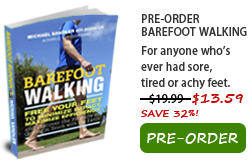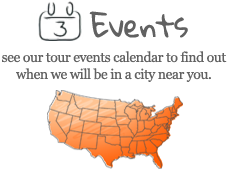3 Steps to Overcoming Leg Length Discrepancy
If you have legs of equal lengths, congratulations! You’re in the lucky minority. If you are a runner with LLD, take comfort in the fact that you are not alone. Studies show that 75% of people have LLD up to 2cm. Next time you get to the starting line, remember that most of the people around you may have the same challenge – and may not even know it.

My near death accident left me with a nearly 1-inch leg length discrepancy.
After a devastating accident nearly five years ago, I was left with a one inch LLD as well as a titanium femur and hip to boot. I was told by several stern-faced doctors that I would never run again, and that I should give up on my athletic endeavors and fade silently into a couch potato. Luckily, I didn’t listen. Now I run faster, stronger and (most importantly) pain free for 10-20 miles a day. If I can do it, so can you. Don’t let LLD stand in your way, you CAN overcome this obstacle. If you read carefully and do your homework, you should be running barefoot in just three to six months, without pain and injury-free.
Step 1: Say goodbye, farewell, sionara, arrividerci to heel-striking. A BIG NO NO. Your knees and hips will rejoice in exultation with this choice. NOW is the time to switch to a forefoot landing in your stride. The really good news is that some of the world’s fastest runners (ever heard about those runners from Kenya and Ethiopia?) have always landed on the forefoot. A forefoot strike gives an “independent suspension” to your body, meaning that one leg or foot can come down more than the other to help you get level. Once you have fully transitioned to this new stride, prepare to switch your running into high gear!
Step 2: Before you jet out of the gates, keep in mind that you will need to start SLOW. This can be hard to swallow for those that have been taking daily 10 mile jaunts and racing competitively, so it bears repeating. You will need to take it SLOW and LISTEN to your body. Remember, you are teaching your body something completely new and it will require baby-steps to adjust properly. Start your barefoot time with just a few hundred yards, building 100 yards every other day. Concentrate on form by standing extra tall, working on your pelvic tilt (to get the front and back of your waist sitting neutrally pelvis level) and never bending forward at the waist anymore. Your strides will go from long to extra short (as if you’re running on hot coals) with roughly 180 strides per minute, and you will want to start fully barefoot to let your (temporarily) weak skin keep you from doing too much. Start on cement - the harder the surface, the lighter you’ll land.
Step 3: Let’s address that hip. Over the next week or two, run on the edge of a quiet road that has a good deal of road camber or

I was often caught barefoot running up this road in Boulder, CO due to its severe camber, especially around hair-pin turns.
banking. Instead of running with an orthotic heel wedge to raise your leg (which does nothing for a forefoot strike), you’re going to use the road to raise your shorter leg. Start by running on the edge of this road this way and then gradually over time, work on moving toward the center of the road. What you’re doing is twofold: first, you’re beginning to feel what it feels like to be level again (in essence, teaching your body) and second, you’re working on engaging the core to hold your pelvis in a level position. Quickly you will learn that it is not as tough as it seems. If you practice every other day (never go barefoot two days in a row to begin) your body will begin to figure things out.
Some of you may be modifying these steps in your head because you feel you are stronger and can handle more. And I don’t disagree, you are likely quite strong. So please read the following words carefully: the stronger you are (or were) the HARDER it is to overcome this challenge because you’re likely to muscle through things and do too much, too soon. You may not even know you’re doing too much because you’re so strong. But this is only taking your old running muscles into consideration - not the new muscles you need to develop along with the ligaments, tendons and bones that need to adapt, as well as the flexibility your foot needs to gain. Something you will notice immediately is the forefoot strike works the calves in ways that they have never seen before. Before you overdo it, remember that one mile barefoot or in minimalist footwear is the equivalent of thousands of calf raises with the new forefoot strike. Unless you want to walk in crippling pain and regret for two weeks, heed my instruction.
Take this challenge slowly, realize it’s a game of going slow to go fast in the long run, and listen to your body. It’ll tell you how to get level, how to heal, and how to run once again, like the wind, light and free. Feel free to write with questions and keep us posted on experiences, we love to hear from you! For more detailed information and instruction, attend an upcoming RunBare clinic (upcoming tour dates soon to be announced) or take a look at our book Barefoot Running.
And as always, Run Free!
- Log in to post comments


